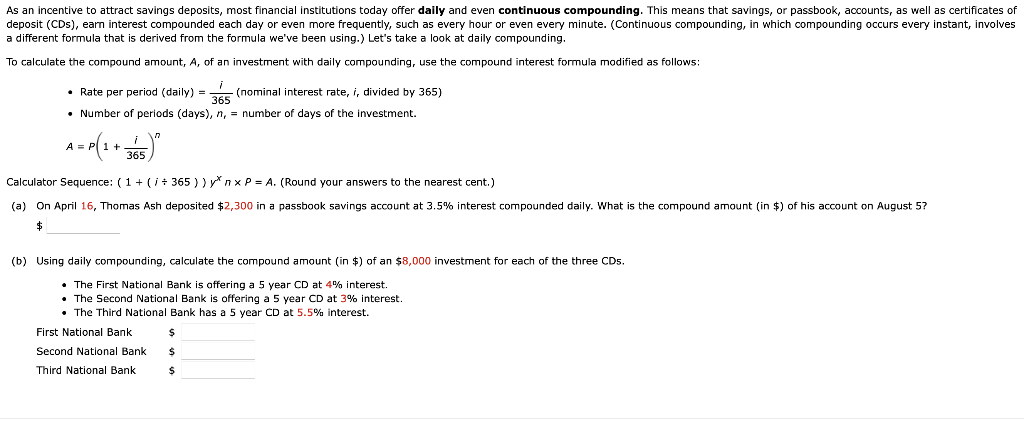
PART B:
 PART C:
PART C:

PART D:

Use Table 11-2 to solve the problem. The requirement for computer server capacity at a particular company is expected to increase at a rate of 15% per year for the next 5 years. If the server capacity is expected to be 1,700 gigabytes in 5 years, how many gigabytes of capacity are there today? Round to the nearest whole gigabyte. GB The following investment requires a table factor for a period beyond the table. Calculate the new table factor and the present value (principal). Use Table 11-2. Round your new table factor to five decimal places and your present value to the nearest cent. Compound Amount Term of Investment (years) Nominal Interest Rate (%) Compounded New Table Factor Present Value $39,000 36 7 annually As an incentive to attract savings deposits, most financial institutions today offer daily and even continuous compounding. This means that savings, or passbook, accounts, as well as certificates of deposit (CDs), earn interest compounded each day or even more frequently, such as every hour or even every minute. (Continuous compounding, in which compounding occurs every instant, involves a different formula that is derived from the formula we've been using.) Let's take a look at daily compounding. To calculate the compound amount, A, of an investment with daily compounding, use the compound interest formula modified as follows: Rate per period (daily) = 365 (nominal interest rate, i, divided by 365) Number of periods (days), n, = number of days of the investment. A= 1= P(1+ 365) Calculator Sequence: (1 + (i + 365 ) ) ynx P = A. (Round your answers to the nearest cent.) (a) On April 16, Thomas Ash deposited $2,300 in a passbook savings account at 3.5% interest compounded daily. What is the compound amount (in $) of his account on August 5? $ (b) Using daily compounding, calculate the compound amount (in $) of an $8,000 investment for each of the three CDs. The First National Bank is offering a 5 year CD at 4% interest. The Second National Bank is offering a 5 year CD at 3% interest. The Third National Bank has a 5 year CD at 5.5% interest. First National Bank $ Second National Bank Third National Bank $ The following interest-bearing promissory note was discounted at a bank by the payee before maturity. Use the ordinary interest method, 360 days, to calculate the missing information. (Round dollars to the nearest cent.) Face Value Interest Rate (%) Date of Note Term of Note (days) Maturity Date Maturity Value (in $) $750 1 14 2 June 6 135 ---Select--- Date of Discount Discount Period (days) Discount Rate (%) Proceeds (in $) Sept. 5 17.5

 PART C:
PART C:







